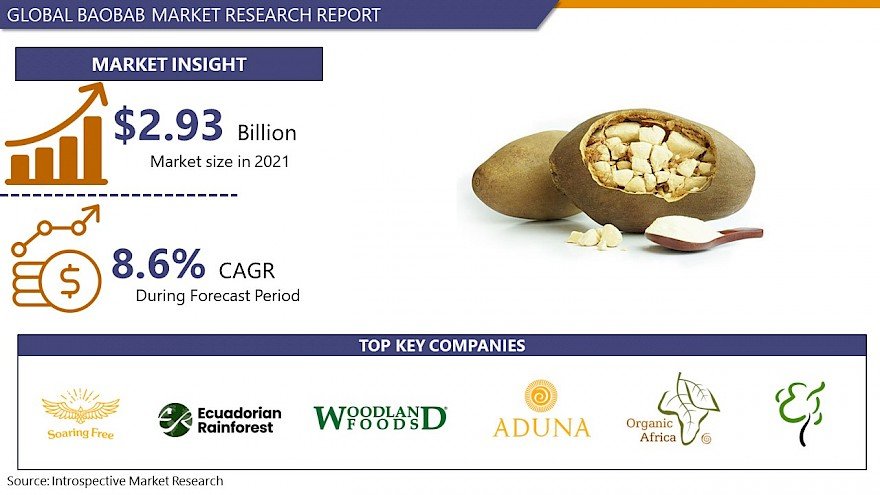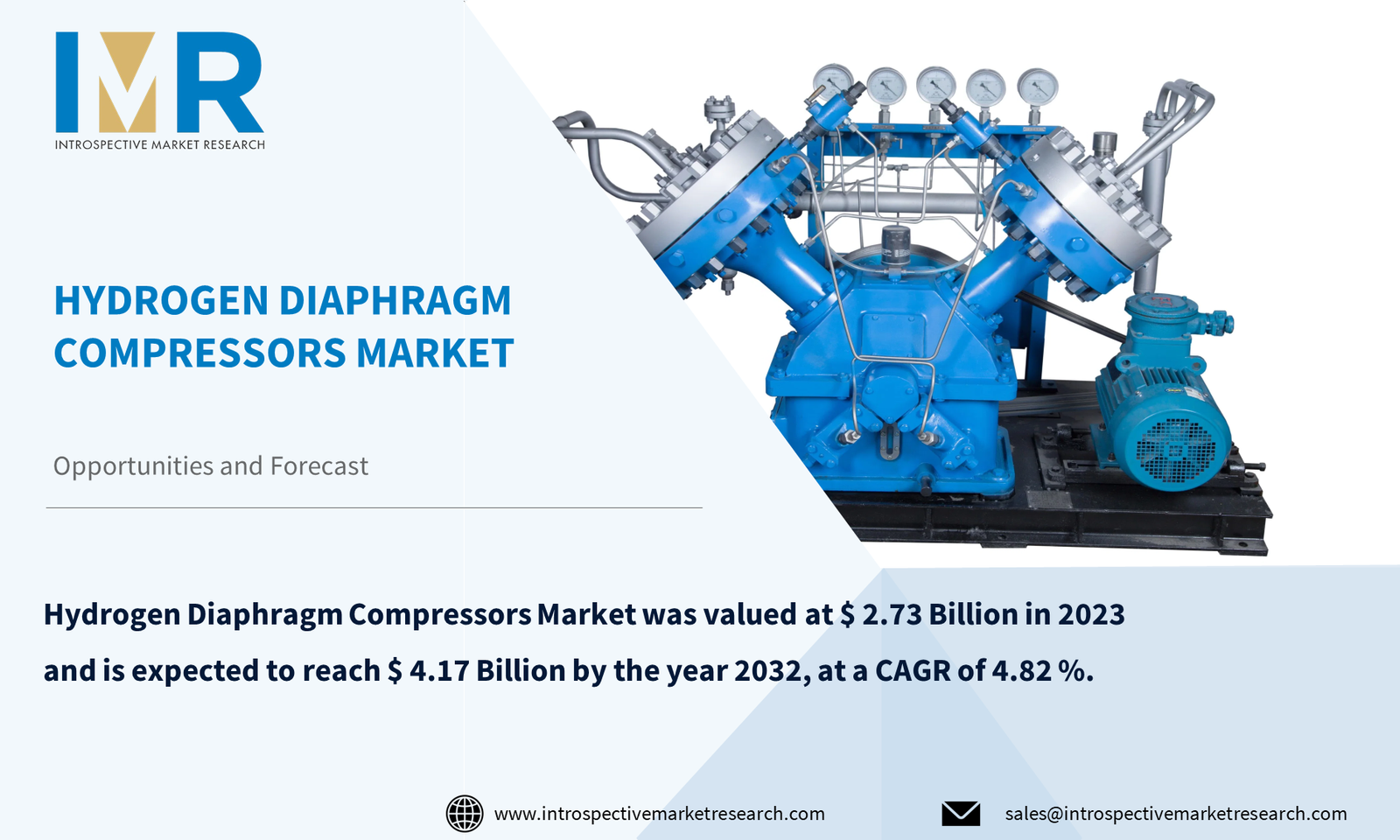
Market Size – USD 2.93 Billion in 2021, Market Growth - CAGR of 8.6%, Market Trends –the increasing demand from electronics industry is widening the scope for Baobab Market.
According to the current analysis of Introspective Market Research, the global Baobab Market was valued at USD 2.93 Billion in 2021 and is expected to reach USD 5.22 Billion by the year 2028, at a CAGR of 8.6%.
Baobab (Adansonia digitata) is the largest tree species of the genus Adansonia, from which its fruits are obtained. Baobab is native to the African continent, typically observed in sub-Saharan African countries. The baobab tree takes about 16–23 years to mature and produce its flowers. Baobab is a multi-purpose tree; its fruit pulp, roots, seeds, leaves, flowers, and bark can be utilized for human consumption. Baobab is rich in vitamin C, calcium, protein, phosphorus, fiber, carbohydrates, potassium, and lipids. Baobab is gaining popularity in various sectors such as functional foods, beverages, nutraceuticals, cosmetics, sauces & seasonings, and others, which is triggering the growth of the market. The high shelf life of the product is having a positive impact on the growth of the market. Growing consciousness of the baobab in various regions is anticipated to surge the growth of the market.
From spring 2020, there has been rising consumer demand for health products around the globe, in particular supplements enhancing immunity. This is a trend that is anticipated to continue in the forecast period. The global coronavirus pandemic is driving this trend, as consumers are looking to improve their immune systems. Following the outbreak of COVID-19, consumers have begun to pay greater attention to their diets and health as they try to grow their immunity. For instance, baobab's high vitamin C content helps the body fight infections.
Baobab Market is segmented by Form (Oil, Powder, Pulp, And Others), Source (Conventional and Organic), Species (Adansonia Digitata, Kilima, Grandidieri, Madagascariensis, and Others), Application (Food and Beverages, Personal Cares, Nutraceuticals, And Others), Distribution Channel (Assemblers, Rural Wholesalers, Urban Buyers, And Online), And Region.
Key participants such as Soaring Free Superfoods, Ecuadorian Rainforest LLC, The Coca-Cola Company and Woodland Foods, Mighty Baobab Limited, ADUNA Ltd., Organic Africa, ALAFFIA, Atacora Essential, Inc., Baobab Foods, Inc., Organic Herb Trading Company, Afriplex (PTY), Superfruit Scandinavia AB, Baobab Fruit Company Senegal, B'Ayoba (Pvt) Ltd., EcoProducts, Farafena, Holland & Barrett Retail Ltd., Soaring Free Superfoods, Indigo Herbs Ltd., Kiki Ltd., Organic Burst UK Ltd., Powbab, Inc., Stern Ingredients, Inc., Z Natural Foods LLC., and others.
Regional Outlook (Revenue in USD Billion; Volume in Units, 2021-2028)
- North America
- U.S.
- Canada
- Mexico
- Europe
- Germany
- France
- UK
- Italy
- Turkey
- Rest of Europe
- Asia Pacific
- China
- India
- Japan
- South Korea
- Indonesia
- Vietnam
- Thailand
- Malaysia
- Singapore
- Rest of Asia-Pacific
- Middle East & Africa
- Saudi Arabia
- South Africa
- Iran
- Rest of MEA
- Latin America
- Brazil
- Rest of LATAM






